India, with its deep-rooted civilizational legacy, has witnessed countless turning points in its long and storied past, many of them etched in history through epic battles that shaped empires, cultures, and destinies. From the vast plains of Kurukshetra to the rugged passes of Panipat, the subcontinent has been a stage for conflicts that have defined eras and altered the course of history. These battles were not just clashes of arms, but pivotal moments that echoed the ambitions, resilience, and ideologies of their time. In the following pages, we delve into some of the most significant historical battles fought on Indian soil, tracing their locations and historical impact through MAPOG’s dynamic Historical Battlefields mapping interface. This visual journey not only brings history to life but also offers a contextual understanding of the terrain, strategies, and legacy behind each confrontation.
Key concepts of Historical Battlefields mapping
Historical Significance of Battles
- Battles often marked the beginning or end of major empires (e.g., the Battle of Panipat leading to Mughal dominance).
- They served as decisive moments that shaped regional and national identities.
- Conflicts often influenced the spread or decline of religions, languages, and cultures.
2. Geopolitical Context
- Rivalries between regional kingdoms (like the Cholas vs. Pandyas or Mughals vs. Rajputs) were rooted in trade, territory, and power.
- Strategic alliances and betrayals before battles reveal the complexity of Indian diplomacy.
3. Strategic Locations
- Most battles occurred near rivers, trade routes, or forts, indicating their economic and strategic importance.
- Natural terrain (plains, forests, hills) played a crucial role in determining battle tactics.
- Mapping reveals why certain locations were repeatedly contested.
Steps to Map the Oldest Learning Centers:
1. Access MAPOG’s Mapping Platform
Visit MAPOG platform in your browser.
Click on “Create New Map” in the top- right corner of the homepage to start creating your own map.
Place the following details on your map:
- Add Title of your map. Description telling us what it’s about. And a nice Image to symbolize your theme.
- After that, click Save.
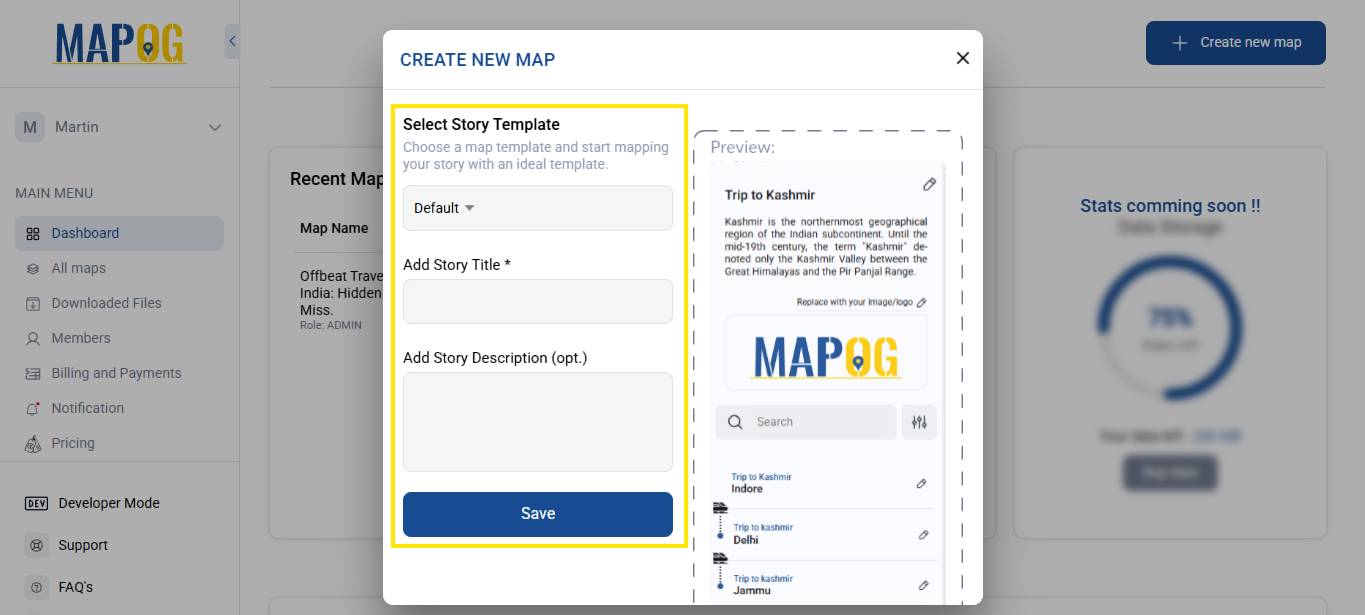
2. Add a Story Point
Click on ‘Add Story‘, then select the locations manually and give conform to confirm your selection.
Stick with the default settings and enter the following:
- A Title for the point (like the name of the destination),
- A Description about the location,
- And an Image representing that place.
When you’re done, click Save.
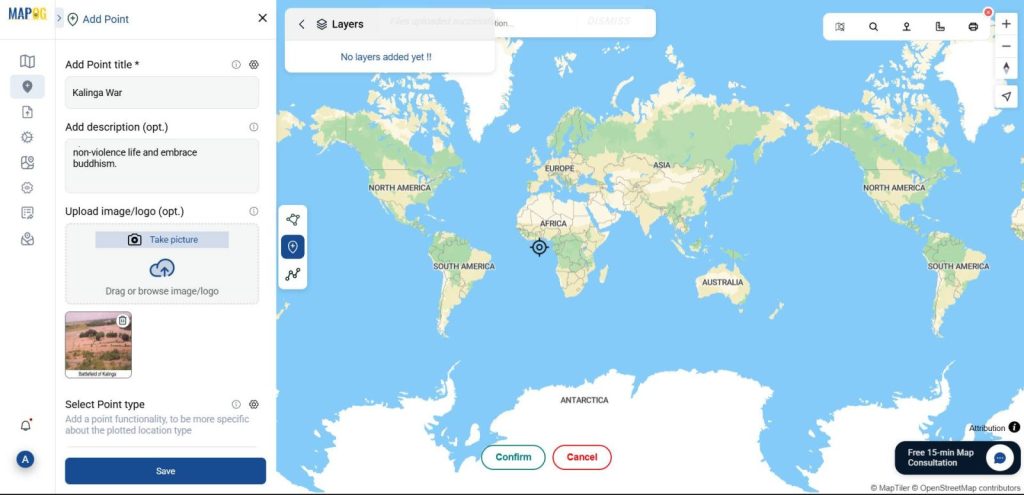
3. Add More Destinations
Repeat the steps above to add more battle locations, one at a time.
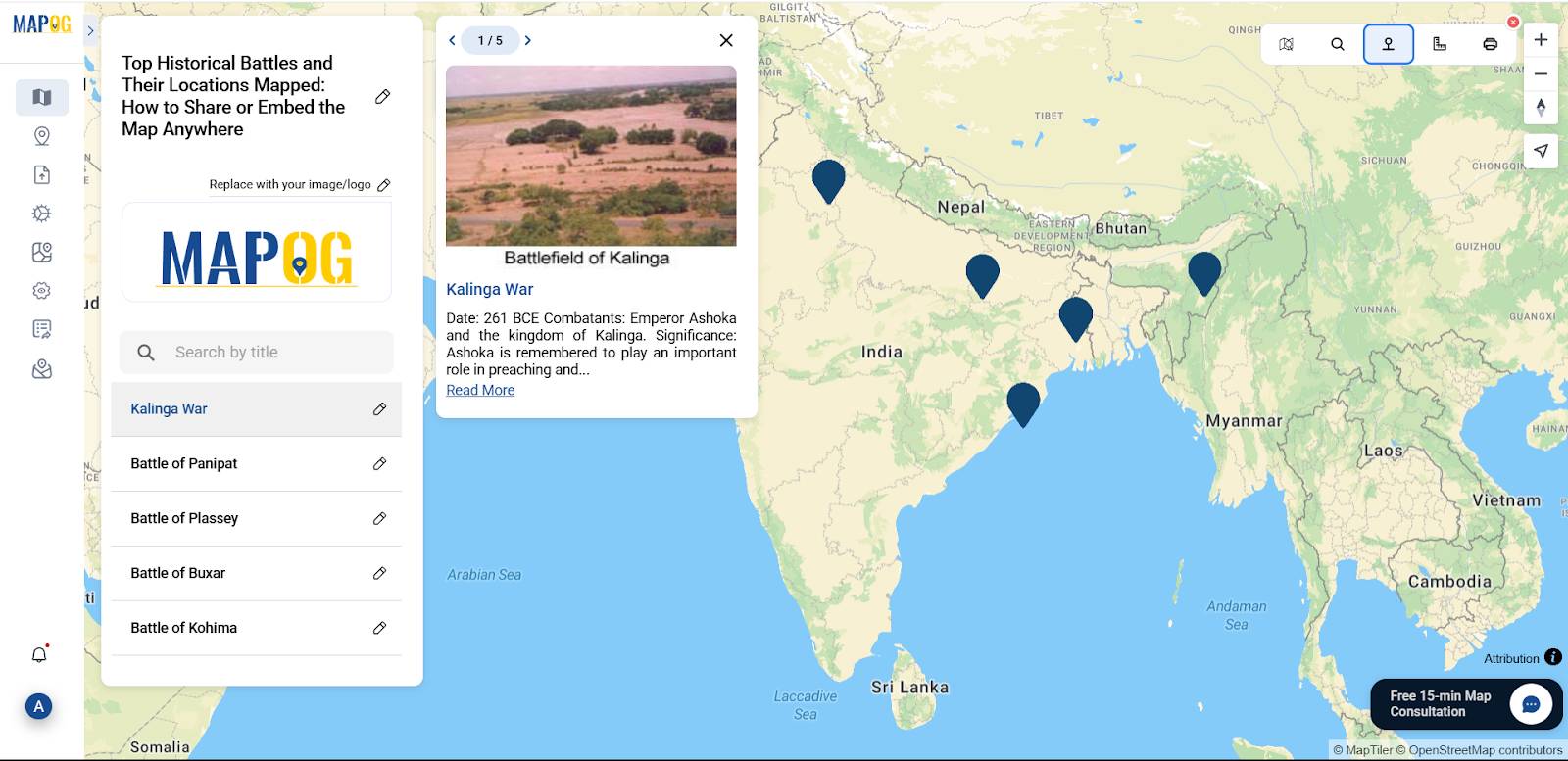
4. Share or Embed the Map Anywhere
Next go to the ‘Preview and Share‘ option, then change the map type to ‘Private’. This will enable the share link. Click on the ‘Share Embedded Link’ option and copy your link and share the map anywhere.
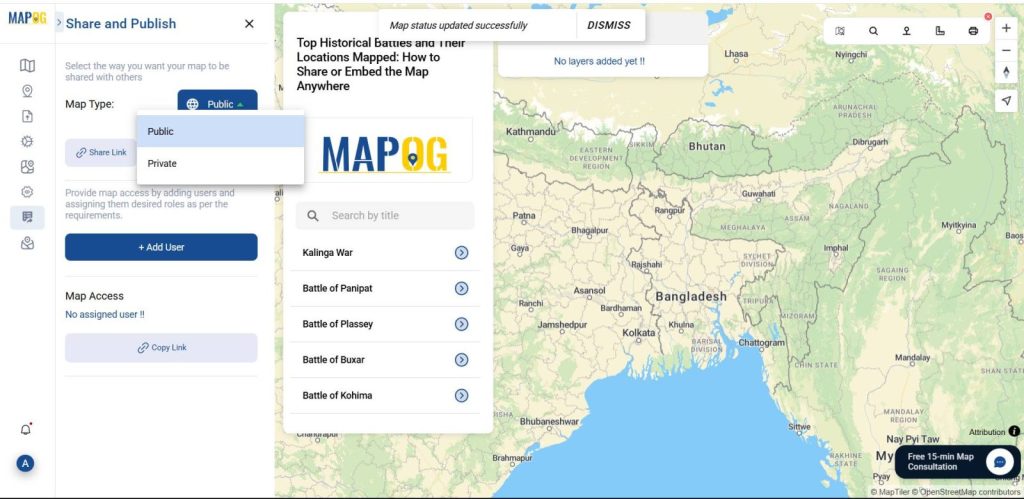
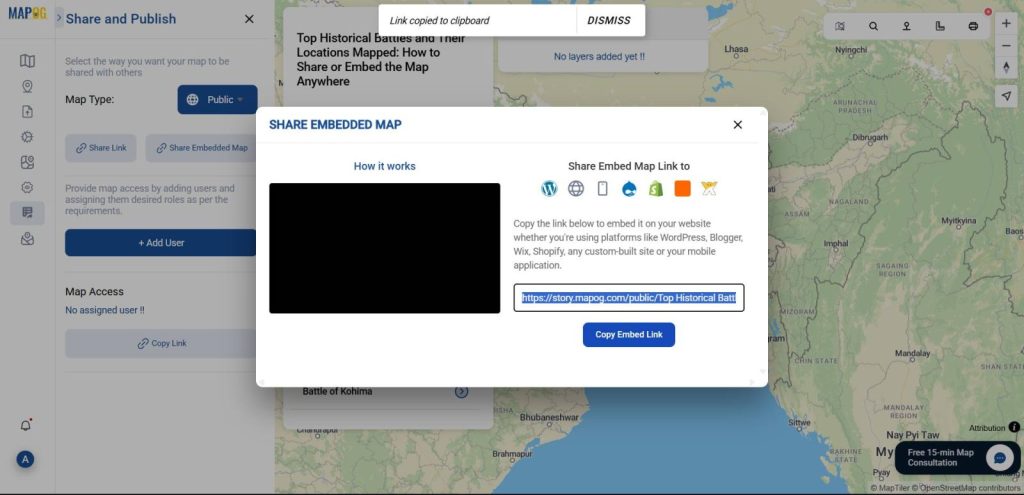
Who Can Take Advantage of Historical Battlefields mapping
Students and Educators
- To enhance history lessons with spatial understanding and visual context.
- To explore the geopolitical impact of battles on modern boundaries.
Historians and Researchers
- For analyzing military strategies, troop movements, and terrain advantages.
- To compare historical patterns of conflict and territorial change.
Tourists and Cultural Enthusiasts
- To plan visits to historical battlefields and heritage sites.
- To gain a deeper appreciation of historical events during travel.
Conclusion:
Mapping top historical battles and their locations is both insightful and rewarding with tools like MAPOG. You can bring history to life, create compelling visual narratives, and inspire others to explore and learn from the past in a whole new way. Here are topics related to this topic:
Journey Through India’s Ancient Gurukulas : Mapping the Oldest Learning Centers